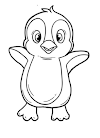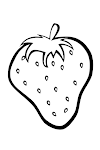Drawing a seahorse can be a delightful and creative endeavor. Seahorses have unique shapes and features that make them interesting subjects for octopus drawing and artistic exploration. Here's a step-by-step guide to help you draw a seahorse.

Materials required:
Drawing paper or sketchbook
Peneus (HB, 2B);
Eraser
Pen finishes or paste (discretionary, for highlights)
Stage 1: General body shape
To begin with, draw a lengthened oval shape. This will be the principal part of the Hippodrome. Consider the point and direction of the oval as they decide the course the ocean horse is looking at.
Stage 2: Financial and Mouth
From the front finish of the oval, a bent line stretches out outward to frame the essence of an ocean horse. Long, rounded ocean otters look like the nose of the ocean. Toward the finish of the nose, draw a little bend downwards to communicate the mouth.
Stage 3: Tail
Expand it long and bend from the rear of the head to the furthest limit of the oval to make a braid. Marine tails are frequently twisted or twisted, recognizing their species. You can add two light bends to recreate this winding impact.
Stage 4: Dorsal Balance
At the highest point of the body, they draw a little balance called the dorsal blade. This balance can be three-sided or wavy in shape. Set it back a little from the head and nearer to the chest area.
Stage 5: Pectoral balances
Add two little balance structures on one or the other side of the body. These are the pectoral blades. Ocean blades are flimsy and frequently look like butterfly balances. They attract bent lines coming from the chest area.
Stage 6: Plates and Eyes
Close to the rear of the head define little boundaries to address the gills. Mariners inhale through the gills and add authenticity to these lines. Then attract round to the eye. Put the eye on the head, giving the seahorse a more normal look.
Stage 7: Surface and Subtleties
Hard plates have plates covering their bodies, providing them with a kind of surface. Add little unpredictable shapes or lines all around the body to address these plates. Focus on the tail, gag and head, where the surface is much of the time more keen.
Stage 8: Conclusion and explanation
Pause for a minute to finish your group drawing. Really look at the extent and any precautionary measures to be taken. At the point when you are content with the principal sketch, you can utilize fine pens or markers to draw the picture of the ocean horse, drawing out the elements and subtleties.
Stage 9: add Maecenas to life (Discretionary)
Consider adding a submerged foundation to your deck. You can draw ocean growth, coral, energized spots, or air pockets to cause a really intriguing situation. This step is totally discretionary and relies upon your making inclinations.
Stage 10: Examination with Varieties (Discretionary)
Assuming you utilize hued pencils or paint, you can explore different avenues regarding attracting varieties to life. Seahorses arrive in various shades, from radiant oranges and yellows to unpretentious greens and earthy colors. Adding variety can improve the visual allure of your work of art.
Drawing a hippopotamus horse permits you to investigate inventive perspectives and procedures. Go ahead and customize your deck with remarkable examples or obstructions. Partake in the creation cycle of this charming submerged animal!







0 Comments